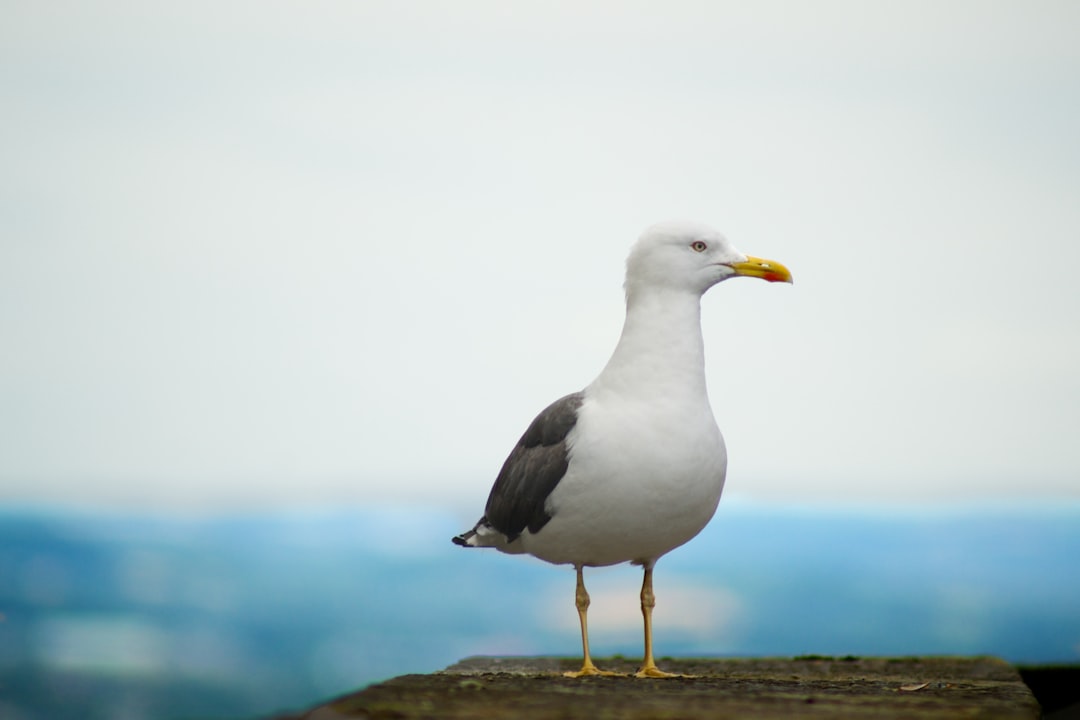Pigeon vs. Seagull
What's the Difference?
Pigeons and seagulls are both common birds found in urban and coastal areas, but they have distinct differences in appearance and behavior. Pigeons are typically smaller and have a more rounded body shape, while seagulls are larger with a sleeker, more streamlined appearance. Pigeons are often seen scavenging for food on city streets, while seagulls are known for their scavenging behavior along coastlines and beaches. Additionally, seagulls are more likely to be seen in large flocks, while pigeons tend to be more solitary or in small groups. Despite their differences, both birds are adaptable and resourceful in their environments.
Comparison

| Attribute | Pigeon | Seagull |
|---|---|---|
| Species | Columba livia | Larus |
| Size | Small to medium | Medium to large |
| Color | Various shades of gray, white, and black | White and gray with black markings |
| Habitat | Urban areas, parks, and cities | Coastlines, beaches, and harbors |
| Behavior | Often scavenges for food | Skilled at catching fish and scavenging |

Further Detail
Physical Appearance
Pigeons and seagulls are both birds, but they have distinct physical differences. Pigeons are typically smaller in size, with a plump body and short legs. They have a rounded head and a small beak. In contrast, seagulls are larger birds with a more streamlined body shape. They have longer legs and a sharper, more pointed beak. Seagulls also have a distinctive white and grey coloration, while pigeons come in a variety of colors including grey, white, and brown.
Habitat
When it comes to habitat, pigeons and seagulls also have different preferences. Pigeons are commonly found in urban areas, where they scavenge for food in parks, streets, and rooftops. They are well-adapted to city life and can often be seen perched on buildings or statues. Seagulls, on the other hand, are typically found near bodies of water such as oceans, lakes, and rivers. They are known for their ability to soar over the water and dive for fish. Seagulls are also commonly found on beaches and coastal areas.
Behavior
Both pigeons and seagulls are opportunistic feeders, but they have different feeding behaviors. Pigeons are known for their scavenging habits, often feeding on scraps of food left behind by humans. They are also known to eat seeds, grains, and insects. Seagulls, on the other hand, are skilled hunters and will dive into the water to catch fish. They are also known to steal food from other birds and even humans. Seagulls are more aggressive in their feeding habits compared to pigeons.
Social Structure
Pigeons and seagulls also have different social structures. Pigeons are known for their flocking behavior and can often be seen in large groups. They are social birds that communicate through cooing sounds and body language. Pigeons are known to form strong pair bonds and will often mate for life. Seagulls, on the other hand, are more solitary birds. They are less likely to form large flocks and are often seen alone or in small groups. Seagulls are also known to be more territorial and will defend their nesting sites aggressively.
Flight Patterns
When it comes to flight patterns, pigeons and seagulls have different styles of flying. Pigeons have a more erratic flight pattern, with quick, darting movements. They are able to fly at high speeds and can change direction rapidly. Seagulls, on the other hand, have a more graceful and steady flight pattern. They are known for their ability to soar effortlessly on thermal currents and can cover long distances without flapping their wings. Seagulls are also skilled at hovering in place while searching for food.
Adaptability
Both pigeons and seagulls are highly adaptable birds that have successfully colonized a wide range of habitats. Pigeons are known for their ability to thrive in urban environments, where they have learned to coexist with humans. They are able to find food and shelter in cities and have become a common sight in parks and plazas. Seagulls, on the other hand, are well-adapted to coastal environments. They are able to survive in harsh conditions and are known for their resilience in the face of changing weather patterns. Seagulls are also able to migrate long distances in search of food.
Conclusion
In conclusion, pigeons and seagulls are both fascinating birds with unique attributes. While pigeons are smaller and more urban-adapted, seagulls are larger and more coastal-oriented. Pigeons are social birds that form strong pair bonds, while seagulls are more solitary and territorial. Both birds are opportunistic feeders, but they have different feeding behaviors. Pigeons have a more erratic flight pattern, while seagulls have a graceful and steady flight style. Overall, both pigeons and seagulls are highly adaptable birds that have successfully carved out niches for themselves in a variety of environments.
Comparisons may contain inaccurate information about people, places, or facts. Please report any issues.